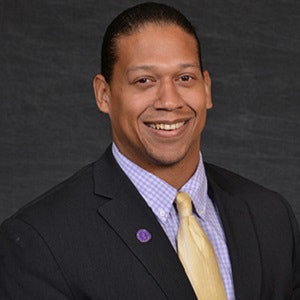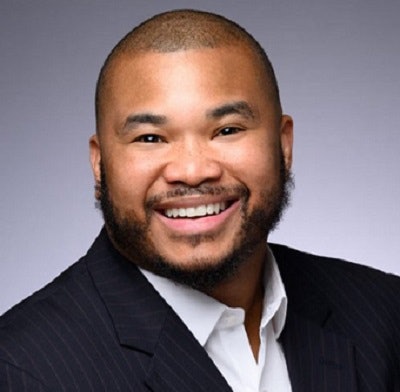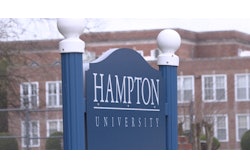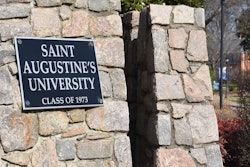 Dr. Will Broussard
Dr. Will BroussardThe impact of COVID-19 and the ensuing health, societal, and financial fallout have been disastrous and life-altering for most people and institutions, including a collapsed state of normalcy within the higher education landscape.
Higher education is a diverse industry with socioeconomically stratified employees and students. It includes financially powerful, name-brand institutions with tremendous capital as well as others that serve the most vulnerable populations while teetering on financial solvency themselves. Not all sectors of higher education—and not all institutions within those sectors—have weathered the challenges equally. Many institutions will struggle, and some in fact may not survive the historic economic and cultural challenge this pandemic has posed. As institutions are catapulted into offering more online courses, teleworking, and massive budget cuts, it is imperative they remain focused on serving marginalized student populations, who inevitably suffer the direst consequences of all students.
While Historically Black Colleges and minority serving institutions (HBCUs/MSIs) are known to graduate lower-income minority students with bachelor’s degrees efficiently and are responsible for an outsized proportion of Black, indigenous, and students of color who become doctors, lawyers, and pharmacists, predominately White institutions (PWIs) enroll the majority of students of color across the country. It’s worth highlighting the ways in which those institutions, who have not had as much comparative success graduating students as their HBCU/MSI peers, or the same historical commitment to those populations, are continuing to make commitments to serving those students, especially in the face of dire financial challenges.
At Minnesota State University, Mankato, the recruitment and retention of underrepresented students is paramount. Now the fastest growing demographic population, students of color are an integral part of the university’s enrollment management plan. That commitment will not relent because of the challenges the university expects to face due to COVID-19 related concerns.
 Dr. Henry Morris
Dr. Henry MorrisIn response to the challenge of recruiting and retaining students of color, Minnesota State Mankato is trying to create a small-school “feel” for ethnically diverse students. The division of Diversity & Inclusion (D&I) is headed by a cabinet-level vice president who leads a team that works with students in the three primary challenges that contribute to the opportunity gap: academics, finances, and environment. Currently, Diversity and Inclusion has more than 22 full-time staff whose job descriptions state they are responsible for recruiting, retaining, and graduating ethnically diverse students. Those professionals have continued to be in touch with students on a daily basis after the transition to remote learning to triage their needs and communicate their concerns to university leadership.
The holistic approach to diverse recruitment and retention efforts starts when D&I invites more than 2,500 high school age students to visit campus. These visits include meeting with current students, admission staff, financial aid staff, graduates, and academic departments. After the visits, D&I staff continue to regularly interact with those students in order to turn interest into yield. After students are enrolled, they are assigned a coach whose primary responsibility is to help them develop the necessary skills to be successful. To ensure students are supported in their academic and cultural pursuits, each division and college is required to have its own diversity plan, and the university provides additional financial support through its MAVCares Emergency Grants, funded through institutional support, as well as corporate and private donations. As a result of these coordinated efforts, the university has reduced the opportunity gap between White students and students of color by 40% since the measurements were initiated, and the diverse student population has quadrupled in the past two decades, up to 17% of the student body.
 Dr. Adriel A. Hilton
Dr. Adriel A. HiltonSeton Hill University (Pennsylvania) has, for over 100 years, used best practices regarding our advocacy in diversity, equity, inclusion for its university community and beyond. The university’s administration understands and stresses the practice of its foundational pillars in establishing a welcoming, serving, learning, and celebratory environment for students. During the pandemic, the institution has established new programs and continues others to support all at-risk students, especially students of color who are impacted by the digital divide, fragile family conditions, and lack of resources. Faculty and staff have been trained to understand the difficulties of having reliable access to the Internet and the difficulties associated with transitioning to an online learning environment. Students have been continuously engaged by hosting daily check-ins through phone calls, chats with the Dean of Students, Spotlight Awards event via Instagram (IG) live, and other lively sessions via social media. In addition, the university launched a campaign for the Setonian Financial Aid Fund to assist students impacted by COVID-19.
At the foundation of these changes and practices, the institution stresses the foundational aspect of being human and our shared governance in empathy. Considerations in all decision making included the extension of grace and support necessary to understand how this pandemic could truly manifest for ourselves and our students. The collective hope at Seton Hill University is the envisioning of a new world wherein shared governance is a daily practice and the university’s pillars are a global standard. The institution has chosen to embody those pillars in its commitment to all of its students in hopes that one day those students, as alumni and leaders, will execute them globally.
As institutions manage the expectations of current students and those who are considering enrollment, the responsibility of balancing budgets mean that executives will make complex decisions focusing on which areas and personnel will be reduced and which areas will be eliminated on their campuses. In the best of times, most institutions proclaim a commitment to which extends to the recruitment, retention, and student success of an ethnically and culturally diverse student population. However, during periods when budgets are reduced aggressively, students of color may suffer a loss of support more significantly than their peers. For those at PWIs, unfortunately, their peers are fewer and further in between. All the more reason that PWIs must be acutely aware of, and lead boldly in their responses to the needs of vulnerable student populations now, and whatever challenges may arise moving forward.
Dr. Will Broussard is the associate vice president of university advancement at Minnesota State University, Mankato.
Dr. Adriel A. Hilton is the dean of students and diversity officer at Seton Hill University.
Dr. Henry Morris is the vice president of diversity and inclusion at Minnesota State University, Mankato.















